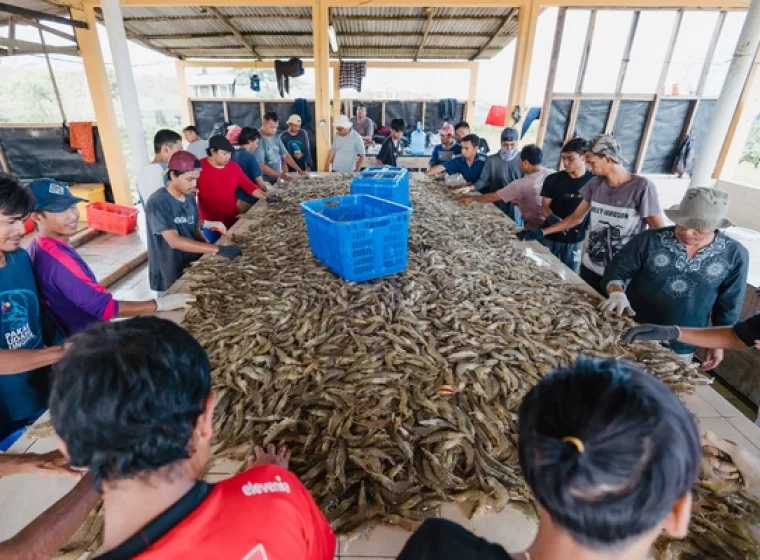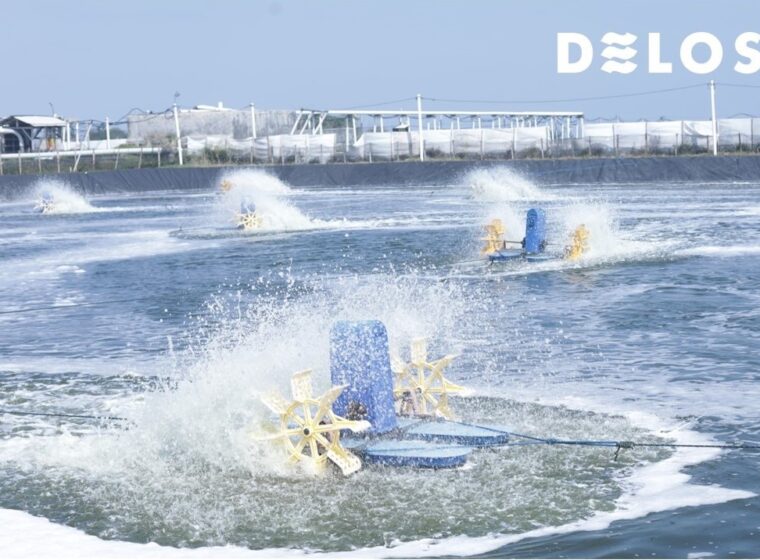Shrimp nursery is one of the methods used to assist in the growth of shrimp larvae into juveniles (called “benur”) ready for aquaculture. This method offers several benefits, especially in reducing stress levels among benur when they are transferred to cultivation ponds.
Nursery plays a crucial role in helping shrimp adapt to pond environments. Vannamei shrimp, in particular, naturally inhabit brackish waters. Moreover, undenurtured shrimp larvae often struggle to adapt and have higher mortality rates.
For those interested in trying vannamei shrimp nursery, here are the steps:
What is Shrimp Nursery?
Shrimp nursery involves the process of growing shrimp larvae into post larvae. The aim is to increase the survival rate of post larvae released into ponds. Additionally, vannamei shrimp nursery helps farmers obtain uniformly sized and high-quality shrimp.
Successful Shrimp Nursery Techniques
1. Prepare the Nursery Environment and Fill with Water
The first step involves preparing the nursery environment and filling it with water. An ideal nursery pond is rectangular and made of concrete. Ensure rounded corners to prevent debris buildup and facilitate water circulation. Before use, the pond should be cleaned, dried, and equipped with aeration systems and blowers for oxygenation.
For water filling, seawater is recommended. Ensure the pond is dry and the installation system is in place before filling. Water is added through an inlet pipe equipped with filters to remove any remaining impurities. Once filled with seawater, add sodium or EDTA (Ethylene Diamine Tetraacetic Acid) at 10 ppm for larval maintenance.
2. Release the Post Larvae
During the nursery phase, the shrimp larvae placed in the pond are nauplii. Before placement, nauplii need to acclimate for 15 minutes to adjust to the pond water temperature.
3. Feeding
At this stage, it’s crucial to pay attention to the type, dosage, and frequency of feeding. Larvae can be fed natural or artificial feeds, but nauplii should preferably be fed natural feeds as they still have their yolk sacs as food reserves. Artificial feeds are only necessary when larvae develop into zoea within 40 hours, requiring fine particles that larvae can consume. Phytoplankton should only be provided up to the mysis stage, then replaced with artemia at the post larvae stage. Feeding doses should be adjusted according to larval stages to maintain health and growth.
4. Proper Water Management
At this stage, regular water exchange in the pond is crucial. Without exchange, leftover feeds and feces can threaten larval health. Water exchange aims to maintain stable water parameters such as temperature, salinity, and pH, preventing stress in larvae due to sudden changes in water conditions.
5. Harvesting Post Larvae Carefully
Harvesting post larvae is done after passing stress tests, salinity tests, and being declared free from diseases and luminescent bacteria. The harvesting process begins by draining 40% of the pond water, installing nets, and opening water channels. Post larvae are caught using harvesting nets, then transferred to buckets filled with water at 28 degrees Celsius. After this process, post larvae are ready for cultivation in ponds by the farmers.
Baca Juga: Tips to Minimize the Environmental Impact of Shrimp Farming
Budidaya Udang Vaname Lebih Produktif Bersama DELOS!
Vannamei shrimp nursery is an effective method for farmers to achieve high survival rates and improve the quality of vannamei shrimp cultivation.
If you wish to enhance the quality of your vannamei shrimp cultivation, rely on DELOS! DELOS is an aqua-tech company that offers the best in science, technology, and operational management, helping you explore new opportunities in aquaculture.
Contact DELOS via email at contact@delosaqua.com or submit your inquiries through the comment section on our website www.delosaqua.com. Cultivate vannamei shrimp more productively with DELOS!




